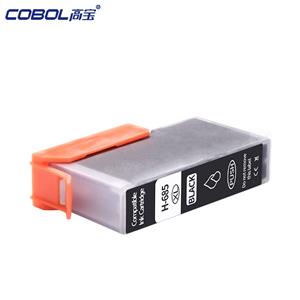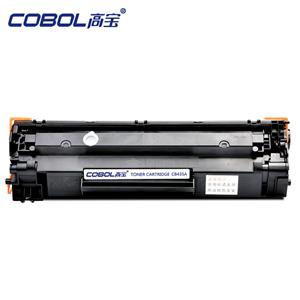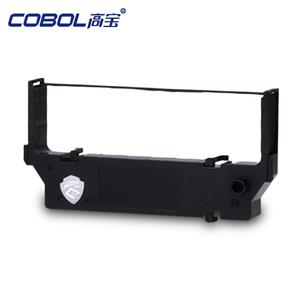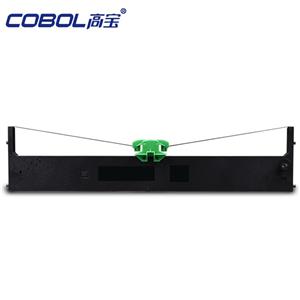Printer toner cartridges: What are they?
As one of the most essential consumables in laser printers, it plays an irreplaceable role. However, many users still have a vague understanding of what a printer toner cartridge is in their daily use.
This article will focus on this topic, providing an in-depth, systematic, and professional analysis of the definition, structure, operating principle, material composition, and classification of printer toner cartridges, helping readers gain a comprehensive and multifaceted understanding of this critical component.
What is a printer toner cartridge?
A printer toner cartridge is a crucial component in laser printers or copiers that stores and supplies toner and completes processes such as developing and fixing. Unlike the liquid ink used in inkjet printers, the toner used in printer toner cartridges is a solid, fine powder composed of resin, carbon particles, and a small amount of additives. A printer toner cartridge is more than just a powder container; it also contains multiple components directly related to imaging, such as the photosensitive drum, doctor blade, and magnetic roller. Therefore, it plays a key role in the laser printing process.
Simply put, a printer toner cartridge is the consumable assembly in a laser printer that performs the core functions of toner storage, toner supply, development, and transfer. It is essential for the printer to properly output text and images.
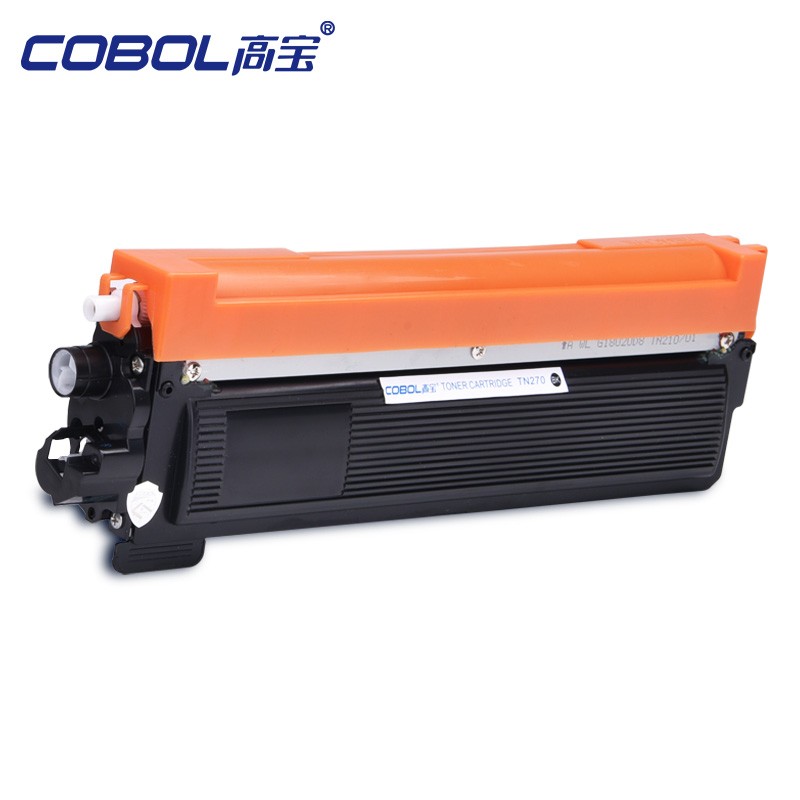
What is the basic structure of a printer toner cartridge?
A printer toner cartridge typically consists of multiple subcomponents, the complexity of which varies depending on the brand and model. The main components include:
1. Toner Hopper
This is the chamber that stores toner. The internal design must ensure a uniform and stable toner supply during the printing process.
2. Photoconductor Drum
Also known as the OPC drum, its surface is coated with a photoconductive material that forms an electrical charge image when irradiated by a laser beam. This then attracts toner to the image area, enabling development.
3. Magnetic Roller
In a single-component development system, the magnetic roller is responsible for evenly distributing toner to the drum surface, controlling toner supply and development quality.
4. Doctor Blade
Controls the thickness of the toner layer on the magnetic roller surface, ensuring even toner distribution and ensuring print density and clarity.
5. Cleaning Blade
Removes residual toner from the photosensitive drum surface to ensure ghosting or smearing during the next image.
6. Waste Toner Container
Collects excess toner that has not been transferred to the paper, preventing accumulation inside the printer.
7. Cartridge Chip
Some printer toner cartridges contain an electronic chip that records usage, counts lifespan, and communicates with the printer to remind the user to replace the cartridge.
This shows that a printer toner cartridge is not simply a toner storage box; it is a comprehensive consumable module that integrates mechanical, chemical, and optical components.
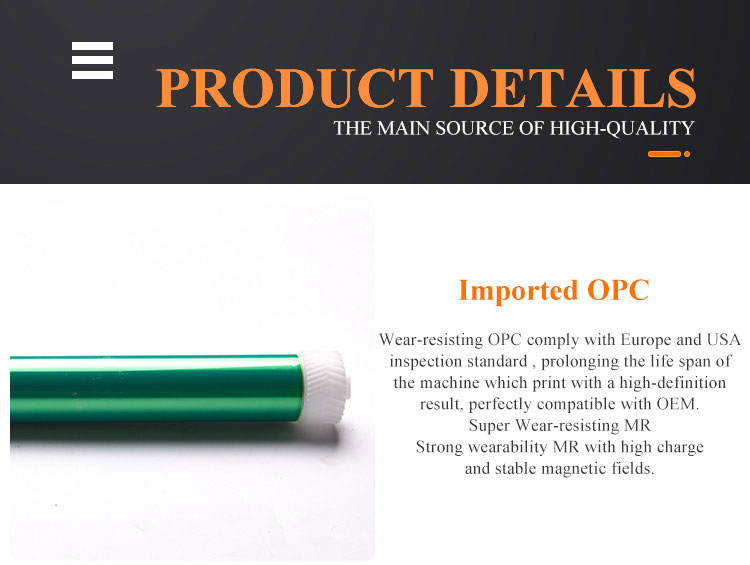
How a printer toner cartridge works—do you know?
In the laser printing imaging process, the printer toner cartridge plays a connecting role. The basic process is as follows:
• Charging: The surface of the photosensitive drum is first uniformly charged by a high-voltage electrode.
• Exposure: A laser beam forms an electrostatic latent image on the photosensitive drum surface based on the print data.
• Development: A magnetic roller transfers toner to the latent image area on the photosensitive drum, where the toner particles adhere due to static electricity.
• Transfer: The toner image on the photosensitive drum is transferred to the paper surface through electrical attraction.
• Fusing: The paper enters a heating and pressure unit, where the toner melts and fixes to the paper.
• Cleaning: A cleaning blade scrapes any remaining powder into the waste toner bin, and the photosensitive drum is ready for the next cycle.
In this series of processes, the printer toner cartridge is a key link, directly determining the clarity, uniformity, and stability of the printout.
What are the materials used in a printer toner cartridge?
The toner, the core consumable in a printer toner cartridge, is typically composed of the following components:
• Resin: Serves as the primary film-forming substance, melting and adhering to the paper during the fusing process. • Toner particles (carbon black or other pigments): Determine the printed color. Black toner typically uses carbon black, while color toners contain organic or inorganic pigments.
• Charge control agent (CCA): Ensures uniform charging of the toner during the development process, improving image stability.
• Flow agent (microparticles such as silica): Prevents toner from clumping and maintains fluidity.
Thus, a printer toner cartridge is more than just a physical component; it involves complex materials science.
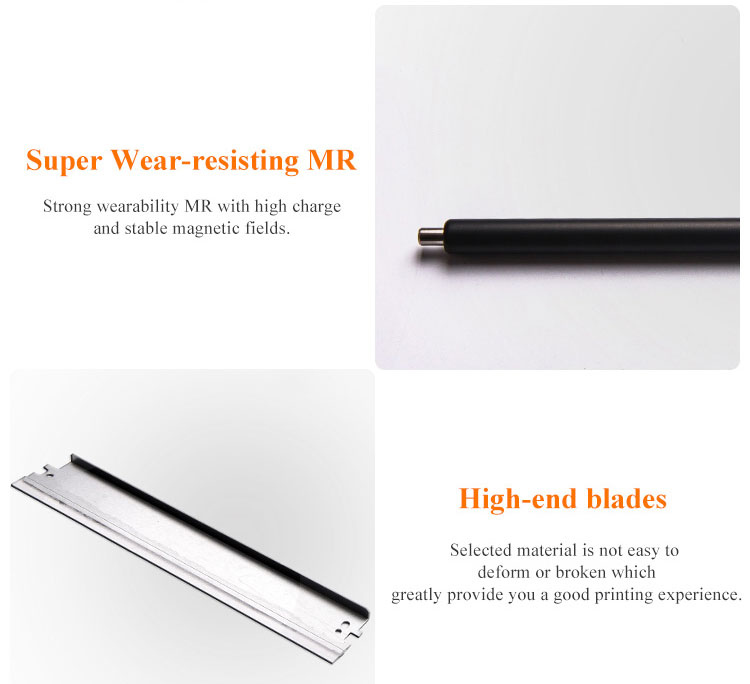
How are printer toner cartridges classified?
Based on design and usage patterns, printer toner cartridges are primarily categorized as follows:
1. Original toner cartridge (OEM)
• Produced by the printer manufacturer, offering optimal compatibility and stability.
2. Remanufactured toner cartridge (Remanufactured)
• Depleted toner cartridges are refilled with toner after being cleaned, refurbished, or having parts replaced.
3. Compatible Toner Cartridges
• Produced by third-party manufacturers, they are functionally compatible with the original product, but are typically priced lower.
4. Split vs. Integrated Toner Cartridges
• Integrated toner cartridges: The photosensitive drum and toner cartridge are integrated into a single design, making them easy for users to replace.
• Split toner cartridges: The toner cartridge and photosensitive drum are separated and can be replaced independently, reducing long-term costs.
Different types of printer toner cartridges vary in terms of lifespan, cost, quality, and environmental friendliness.
What are the advantages of printer toner cartridges?
• Stable print quality: High-quality toner cartridges ensure sharp edges and smooth grayscale transitions.
• Controllable lifespan: Each printer toner cartridge typically has a set lifespan of pages, which depends on the coverage and print mode.
• Convenience: Most toner cartridges are user-replaceable, requiring no specialized tools.
• Significant cost difference: The price difference between original and compatible toner cartridges is significant, but compatibility and stability require careful selection.
The Value of Printer Toner Cartridges
In everyday office, education, government, healthcare, finance, and other fields, printer toner cartridges are crucial for ensuring efficient laser printer operation. They impact the professionalism and clarity of output documents, as well as an organization's consumables budget and operational efficiency.
Printer Toner Cartridge Maintenance and Usage Precautions
To ensure the performance and lifespan of printer toner cartridges, the following precautions are particularly important:
• Avoid direct sunlight and high temperatures: Toner particles are sensitive to temperature, and prolonged exposure to sunlight may cause them to clump.
• Gently shake the cartridge regularly: When the printed color fades, remove the toner cartridge and gently shake it to evenly distribute the powder.
• Avoid strong vibration: Avoid vigorous shaking during transportation or operation to prevent leakage.
• Follow printer prompts: When the chip prompts for replacement, replace it promptly to prevent deterioration in output quality or damage to the printer.
• Properly dispose of waste toner: Waste toner cartridges must be disposed of in accordance with regulations to avoid environmental contamination.
Where is COBOL located and why does it matter to buyers?
We are based in Shunde, Foshan, Guangdong Province, China—a major manufacturing hub for high-quality printing consumables. This location allows us to access advanced supply chains and raw materials, keeping our prices competitive. Buyers benefit from low cost yet premium-grade products, whether they purchase wholesale toner cartridges, ink cartridges, or ribbons. Our company provides prompt delivery and excellent after-sales service.

